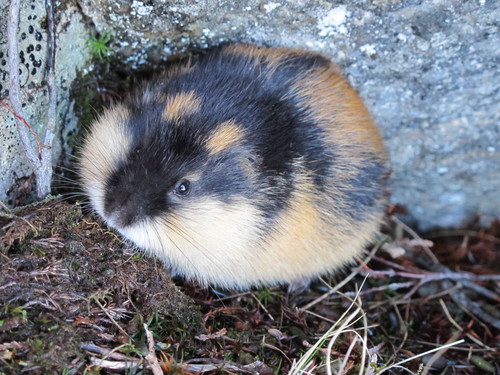
Norway lemming
The Norwegian lemming, Lemmus lemmus, thrives in Scandinavia's tundra. Recognizable by its vivid coat, it undergoes startling population booms. This lemming is vital to its ecosystem, sustaining predators during its population peaks, and is famous for its bold, seemingly fearless behavior.
1-3 years
Lifespan
30.0 - 112.0 g
Weight
Brown, Grey, White
Color
3 mph
Top Speed
Least Concern
Conservation Status
Stable
Population Trend
Characteristics
Lemmus lemmus, commonly known as the Norwegian lemming, is a small rodent found in the tundra of Scandinavia. It has a distinctive coat with a mix of brown, black, and yellow patterns. Known for its dramatic population cycles, it plays a crucial role in the Arctic food web, supporting predators like foxes and owls.
Distribution Range of the Norway lemming
The Norway lemming (Lemmus lemmus) is native to the northern parts of Scandinavia, specifically in countries such as Norway, Sweden, Finland, and parts of the Russian Kola Peninsula.
Norway lemming's Habitat
Environmental Conditions
The Norway lemming primarily inhabits tundra and alpine regions characterized by cold climates with long, harsh winters and short, cool summers. These areas typically feature low, dense vegetation, including mosses, lichens, grasses, and shrubs.
Ecological Niche
The Norway lemming occupies an ecological niche as a herbivore, primarily feeding on grasses, sedges, and mosses. It plays a crucial role in the tundra ecosystem as a prey species for various predators, including birds of prey, foxes, and other carnivores. Its burrowing behavior also contributes to soil aeration and nutrient cycling.
Copyright @ Nature Style Limited. All Rights Reserved.
 English
English